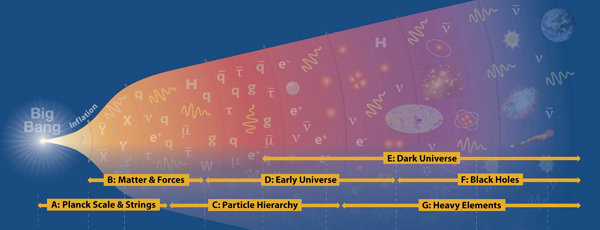
- Image of an assembly at the research reactor ILL in Grenoble, where researchers are looking for the electric dipole in neutrons. // © Institut Laue-Langevin
Just like their colleagues in Research Area A and Research Area B, scientists of Research Area C are also involved with elementary particles, working specifically on the question of why these particles have mass. This cannot be taken for granted. The standard model, where elementary particles are described, is based on gauge symmetries. One gauge symmetry includes at least one exchange particle (gauge boson), which transmits one of the fundamental forces.
However, when gauge symmetry is applied the gauge boson does not have mass, which contradicts experimental observations. Something similar applies to quarks and leptons, too. Scientists have found a way out of this dilemma with the introduction of the Higgs boson, which interacts with particles from the standard model and which gives them mass. Other themes, which are also investigated in Research Area C, include the question of why the interactive effect of quarks/leptons with gauge bosons follows a hierarchy – and how this relates to the CP-violation. This phenomenon is responsible for the existence of matter. Immediately after the ‘Big Bang’ there were equal quantities of matter and anti-matter.
However, when a particle and an anti-particle came together they destroyed each other and liberated energy. It was when the Universe was cooling down that an asymmetry – the CP-violation – caused the generation of slightly higher amounts of matter as compared to anti-matter. Consequently, after the decay of matter and anti-matter, some matter remained and eventually gained the upper hand. Cluster researchers are also involved in precision experiments where static characteristics of neutrons are measured.
For this purpose, they also investigate an electric dipole moment of neutrons, which is highly suppressed according to the standard model, but can be larger by several magnitudes if new physics are present. That said, scientists hope to make further findings on the CP-violation and the supersymmetry.





